Scottish Marine and Freshwater Science Volume 3 Number 2: Scoping Study For Offshore Wave Energy Development In Scottish Waters
Scoping Study For Offshore Wave Energy Development In Scottish Waters
4 Results of the MaRS Modelling
4.1 Wave Resource Assessment
The wave resource assessment provides the necessary background against which the range of environmental, socio-cultural and industry factors must be assessed. Unlike tidal stream power, the areas with potential for wave energy developments in Scottish waters are not strongly limited by the availability of the power resource. The resource assessment output ( Figure 1) clearly indicates that the resource area covers large areas of the sea to the west, north and east of Scotland. The least technically constrained areas are to the west and north of Scotland, while the resource area in the North Sea is progressively more constrained to the south by decreasing wave power.
The resource assessment is dominated by the distribution of wave energy. Offshore waters to the west of the Outer Hebrides are fully exposed to the open North Atlantic and contain the most powerful wave resources in Scotland. Current development interest is mainly in waters closer to shore (for example, west of Orkney, Shetland and Lewis) where although the wave resource is rather less, other technical aspects combine to make the areas potentially attractive for development at this time. The powerful resources further offshore indicate that there is considerable scope for expansion into new areas as technical capabilities improve.
Figure 1 Resource assessment for offshore wave energy development in Scottish waters.
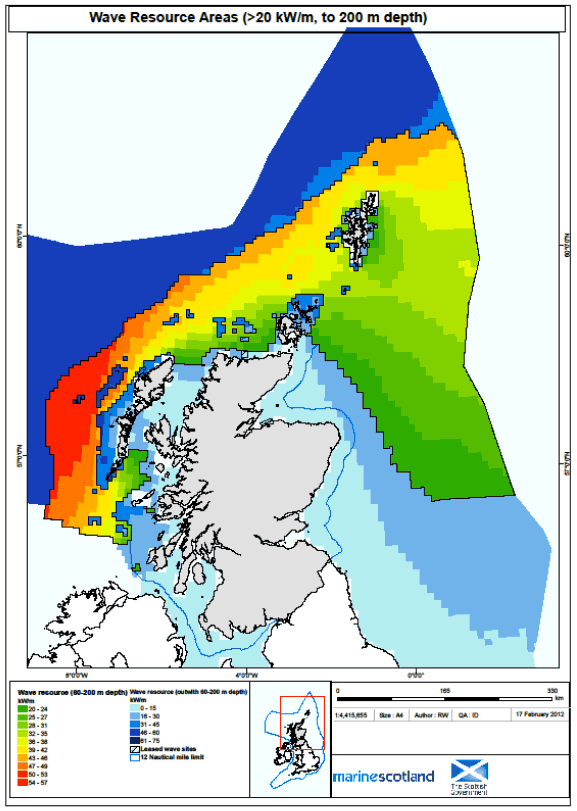
4.2 Industry Restriction Model
The output from the Industry restriction model ( Figure 2) is dominated by the predominance of current "industrial" activity in the coastal zone, shipping routes and military exercise areas. For example, aquaculture is currently entirely limited to waters within a short distance of the shoreline, as is much of the shipping activity (ferries, vessels on passage around Scotland), and some of our most valuable fishing grounds are in the sheltered waters of the Minch.
4.3 Environmental Restriction Model
The output from the Environment restriction model ( Figure 3) again indicates greater levels of constraint in inshore waters. Relatively high levels of constraint in the North and South Minches are influenced by their importance to seabirds and marine mammals. The designated areas around Rhum and St Kilda, and in the inner Moray Firth are prominent, as is the general importance of waters off the east coast between Peterhead and Berwick to seabirds.
4.4 Socio-Cultural Restriction Model
The output from the Socio-cultural restriction model ( Figure 4) generally indicates low levels of constraint in most areas of Scottish waters. The areas where constraint is encountered are dominated by areas close to the coast, and particularly areas in and adjacent to National Scenic Areas, where particular importance of landscape considerations may be anticipated. Further contributions to socio-cultural restrictions arise from yachting and sailing activity, surfing beaches and the potential for sub-sea archaeological remains.
Figure 2 Output from the Industry Restriction model for offshore wave energy development in Scottish waters.
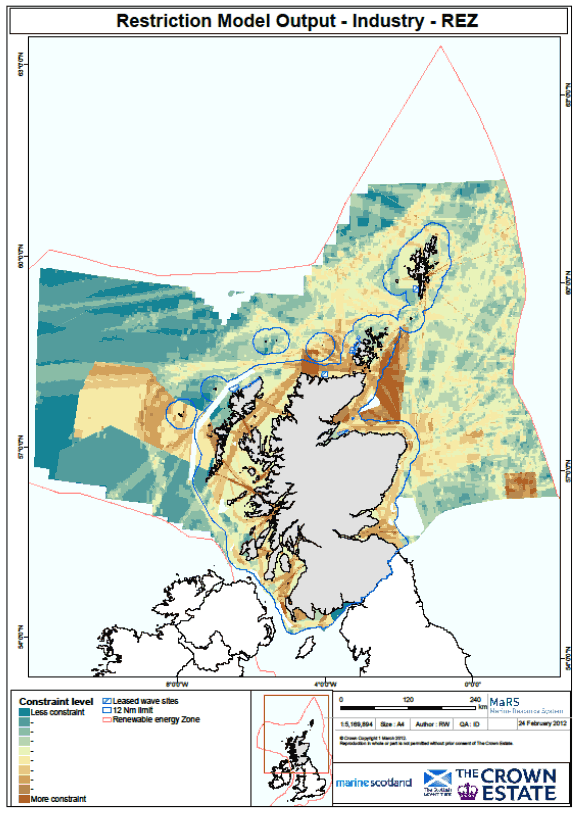
Figure 3 Output from the Environmental Restriction model for offshore wave energy development in Scottish waters.
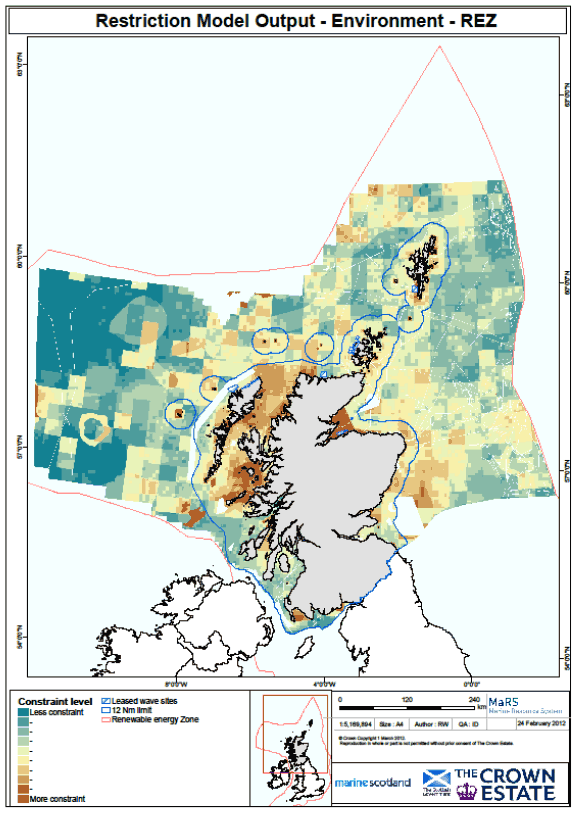
Figure 4 Output from the Socio-cultural Restriction model for offshore wave energy development in Scottish waters.
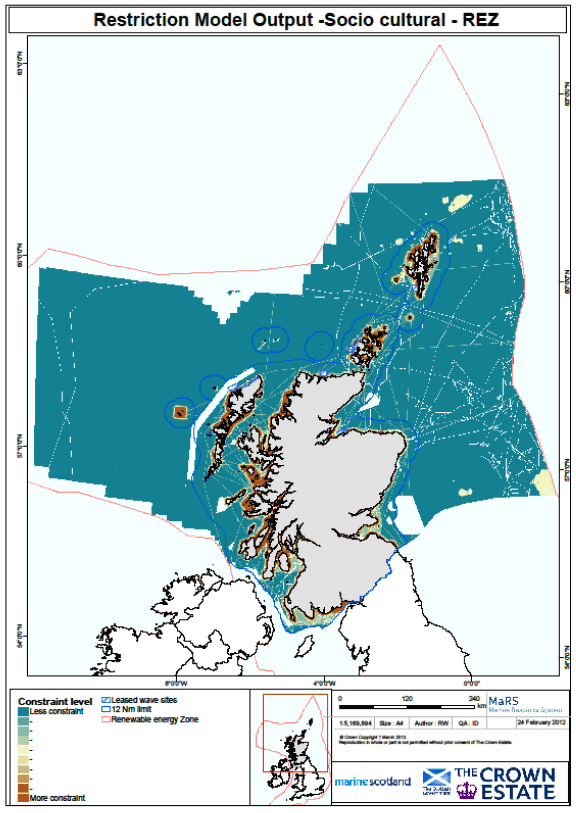
4.5 Combined Models
An expression of the overall level of constraint on wave energy developments in Scottish waters needs to take account of environmental, industry and socio-cultural restrictions. The presentation of the information by theme has been shown to reduce the difficulties inherent in developing relative weightings for very diverse types of data ( e.g. the relative weighting of seabird colonies, wrecks, fish landings, and basking shark sightings). The current Scoping Study has been carried out with the minimisation of consenting risk in mind. Having grouped the data and developed thematic restriction models, it is now possible to combine the models within MaRS and assess the sensitivity of the outputs to variation in the overall weighting between themes. This approach had previously been used successfully in the Scoping Study for the Saltire Prize
Four Combined models were created, in which the relative weightings of the themes were changed. In an Equal Weighting model, the three themes were weighted equally. Three further models were developed, in which each of the themes was assigned a weighting equal to the sum of the weightings for the other two themes, as in Table 1.
| Environment theme | Industry theme | Socio-cultural theme | MaRS model ref. | Figure | |
|---|---|---|---|---|---|
| Equal weighting constraints model | 100 | 100 | 100 | 2592 | Figure 5 |
| Environmental focused constraints model | 200 | 100 | 100 | 2590 | Figure 6 |
| Industry focused constraints model | 100 | 200 | 100 | 2591 | Figure 7 |
| Socio-cultural focused constraints model | 100 | 100 | 200 | 2589 | Figure 8 |
The resultant models are shown in Figures 5, 6, 7 and 8.
There are some broad similarities between the outputs, i.e. features that are not very sensitive to the relative weightings of the three themes:
- Constraint is generally a coastal phenomenon. Most of the activities in the sea, from all three themes, are concentrated in coastal waters. The degree of constraint decreases with distance from the coast. This is particularly clear in the North Minch area, where waters east of the Western isles are generally highly constrained, while those to the west of the Western Isles show much lower levels of constraint.
- On the east coast, the most constrained areas are in the inner parts of the major firths, the Moray Firth and the Firths of Forth and Tay. The degree of constraint decreases seawards.
- The North and South Minch are generally moderately to strongly constrained. However, there are areas on the west coast further south, west and south west of the Inner Hebrides, where the degree of constraint is much less. The level of constraint in inshore waters between the Inner Hebrides and the mainland is generally similar to that in the Minch.
- The degree of constraint off the east coast of Scotland is less than in the Minch, but moderate constraint is present over much of the Moray Forth and persists and for 30 miles or more offshore of most of the east coast. This feature is much less prominent in the model which emphasises socio-cultural interests, possibly because of the greater importance of designated scenic areas on the west coast.
- The model emphasising socio-cultural interests is dominated by landscape issues in the inshore waters west of Scotland in Orkney and Shetland. Landscape is generally considered to be a less significant issue for wave energy projects than for wind power projects, and this is reflected in the confining of the high levels of constraint to the area of sea immediately adjacent to the coast. The underlying landscape layer was based upon floating devices, or devices which emerge from the sea by a few metres. It may be anticipated that wholly submerged devices, or those which emerge to a lesser degree, would be considered to have less interaction with the landscape.
- The degree of constraint in offshore waters in the Solway Firth is generally low to moderate. However, issues of conservation designation and landscape clearly increase the sensitivity in waters immediately adjacent to the coast.
- Generally, the levels of constraint outside STW is much less than that within STW. It is also decreases with distance offshore outside STW, such that at 30-40 miles offshore the levels of constraint are generally very low. There will be some sensitive areas, such as those associated with the oil and gas industry, where development may not be appropriate.
Figure 5 Combined restriction model, giving equal weight to the environment, industry and socio-cultural themes.
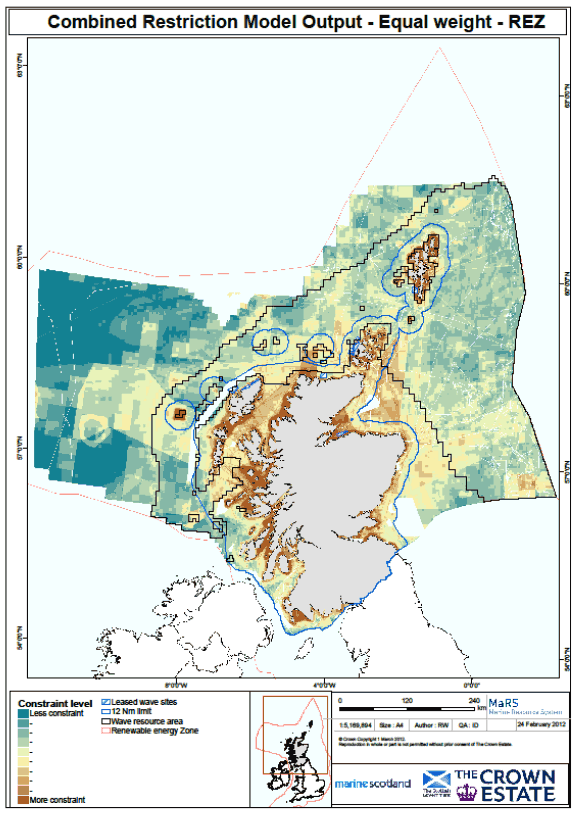
Figure 6 Combined restriction model, emphasising the environment theme.
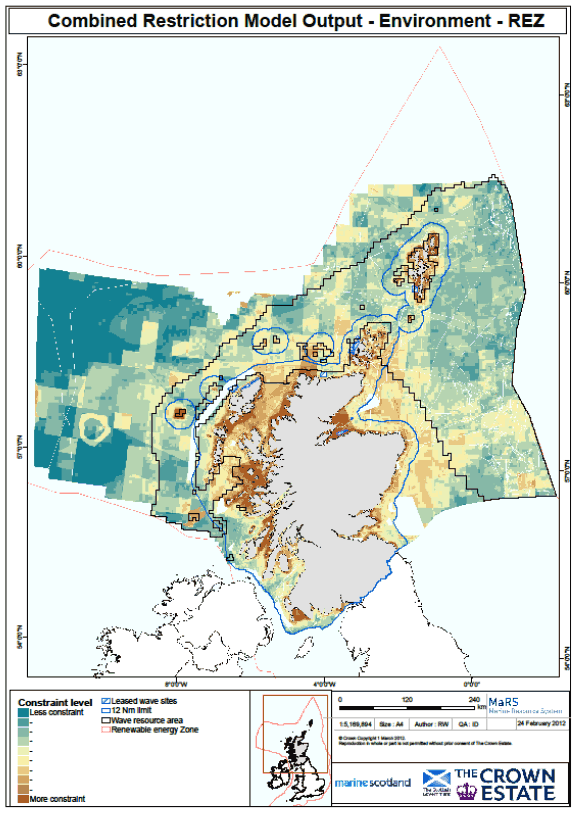
Figure 7 Combined restriction model, emphasising the industry theme.
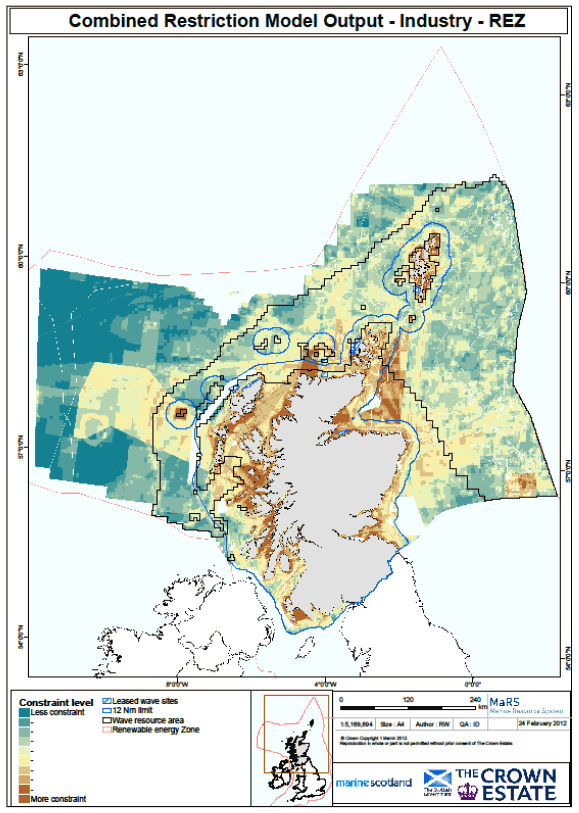
Figure 8 Combined restriction model, emphasising the socio-cultural theme.
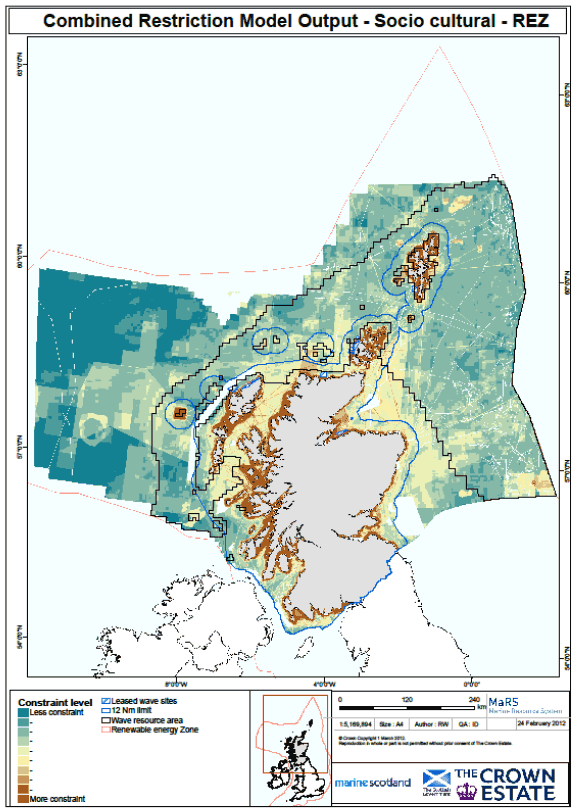
Contact
There is a problem
Thanks for your feedback